Sometimes when I look at schematics like the Beagleboard and the Raspberry Pi, some of the pin numbers look like reference designators, like C10. And what makes it even more confusing is that there is a capacitor named C10. Why would they do this for some components and not for others where they use regular numbers like simply 1,3, etc.? Why would they do this? Do they refer to them like,"the C10 pin" for pins and, "the capacitor at C10", or something similar to that? Is there any specific or special reason to do this?
1 Answers
BGA packages have a grid of pins (hence the name, ball grid array) and so the names are more X and Y coordinates as opposed to simple pin numbers. Generally BGA pins use letters for Y and numbers for X, skipping a few letters that look similar (I, O, Q, S, X, Z). So pin numbers for large BGA parts that can be things like AJ22, AP15, C4, K9, etc.
As for referring to particular pins, you could say one of the following: "U1 pin G5", "pin G5 on U1", or "pin G5 of U1". You generally want to make sure to add the word 'pin' so that it's unambiguous. Especially because you can have a pin U5 on U1 and a pin U1 on U5, if U1 and U5 are both in BGA packages. Same goes for mezzanine connectors.
For reference, here is the footprint for a Spartan 6 FPGA in a 900 pin BGA package:
- 40,694
- 1
- 68
- 109
-
1To the OP, see also this related question: http://electronics.stackexchange.com/questions/35911/correct-pin-naming-of-bga-and-dil-chips – user57037 Nov 30 '15 at 04:06
-
If someone else is curious about the legend for the above pinout, the datasheet is [here on pg. 326](http://www.xilinx.com/support/documentation/user_guides/ug385.pdf). – 2012rcampion Nov 30 '15 at 06:40
-
And if you want to see an even bigger chip (1924 pins), see http://www.xilinx.com/support/documentation/user_guides/ug365.pdf page 428. – alex.forencich Nov 30 '15 at 07:21
